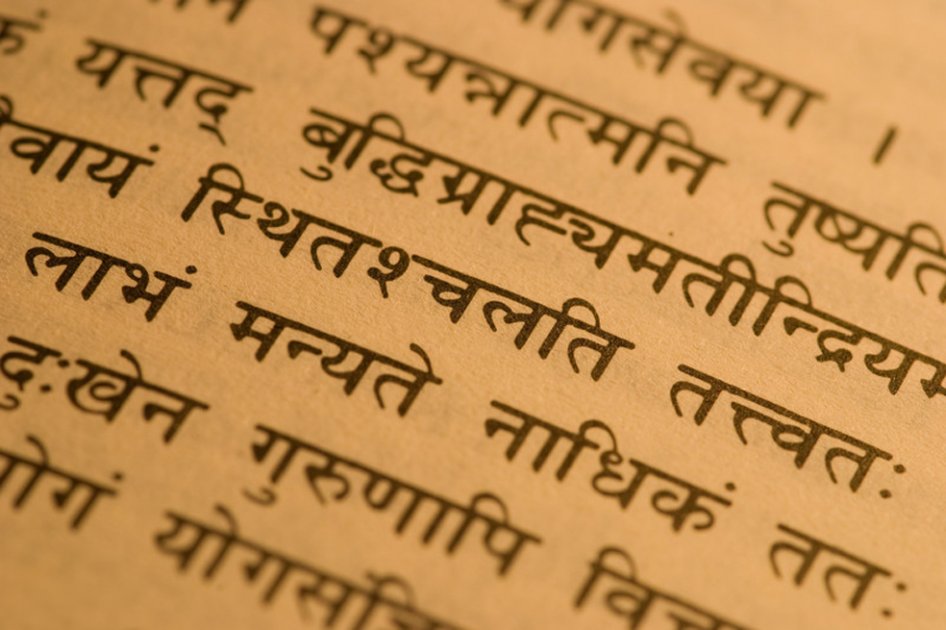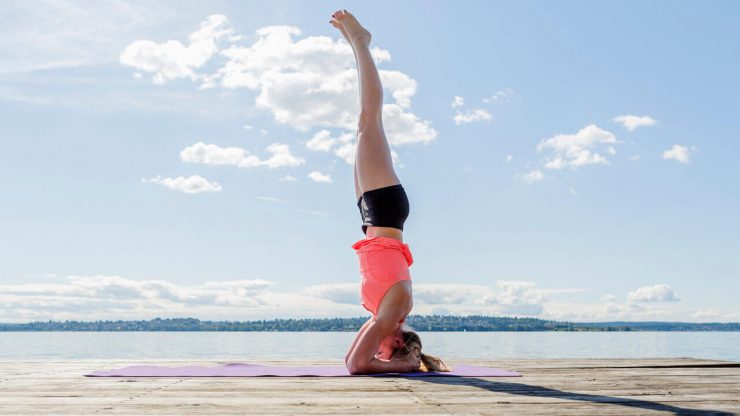1. The meaning of sirsasana
Sirsasana is an advanced inversion that exhibits strength, control, and the beauty of overcoming the fear of falling through physical and mental balance. The name is derived from Sanskrit sirsa, meaning “head“, and asana meaning “pose” or “posture“.
In this asana, the head and forearms rest on the mat with the hands together. The legs are raised and the weight of the body is shifted until the head and forearms fully support it. The torso is perpendicular to the mat in a straight line from the hips to the head.

2. Etymology of the word Sirsasana
Shirshasana is called the “queen of all asanas” by ancient yogic texts. The reasons why she carries such fame are easy to understand.

This pose is called the “dolphin pose” because the body resembles a dolphin swimming in the sea. The Sanskrit name for this asana is ARDHA-SHIRSHASANA: ARDHA means “middle” and SHIRSHASANA means “standing.”
3. Everything you need to know about Sirsasana
Sirsasana is considered by some to be the most important inversion and is often referred to as the “king” of asanas. This complete inversion returns blood to the heart and brain, refreshing the cardiovascular and lymphatic systems and providing energizing effects throughout the body.

Those who are dedicated to the practice of spiritual yoga can use this asana to redirect sexual energies into a higher spiritual energy, which is believed to increase well–being and promote a positive aura. This higher energy is called ojas and is believed to help enhance other yogic spiritual practices.

Inversions like sirsasana help open the ajna chakra, or third eye. The inverted position of the body and the position of the head allow the energy to flow into the third eye. Not only does this pose offer mental clarity and renewed energy, it is also believed to help increase memory and concentration over time.
The sirsasana pose also has variants such as Mukta Hasta Sirsasana and Baddha Hasta Sirsasana that are often practiced in Ashtanga classes.
4. The benefits of inverted postures
Inverted postures have many benefits such as helping to eliminate fluid retention in the legs, improve breathing, the circulatory system and relieve pressure in the lumbar and sacral areas.

By completely changing the natural position of the body in the sirsasana posture, we manage to renew the blood circulation of the body and all the systems that form it. The brain receives a greater amount of blood and oxygen, the same happens with the heart and they are forced to work at a different rhythm than usual.
By performing the sirsasana posture, we detoxify the vital organs and raise the energy of chakra number seven or Sahasrara.
By inverting the body, the energy of the lower chakras is released, it is the energy that accumulates our emotions and also where sexual energy resides.
Inverted postures are often contraindicated for people with cervical injuries or glaucoma. If you are pregnant or have just given birth, consult a professional because there are conflicting opinions about it. It is a balancing and complex posture that carries risks during pregnancy and postpartum.
About our purpose
“Our effort is focused on offering quality content on the Yoga expounded in the sutras of Patanjali, the oral tantra of the Shakta tradition of Shivaism from Kashmir, and the most relevant aspects of Hindu spirituality. In our ignorant and complacent Western society, both Yoga and Tantra are continually vilified and misunderstood by multiple pseudo-masters, who concoct, for their benefit, versions of these ancient traditions.
The time has come to offer nearby Spanish-language content, based on the sacred scriptures of Hinduism, so that the truth of Traditional Yoga and the Shivaita Tantra tradition begin to take root in our society. We prostrate before Sri Nityananda and Sri Muktananda, links in our tantric tradition, who impel us to do this work. But above all, thank the inspiration of our guru, Swami Satyananda Saraswati, who is a source of guidance, love and divine inspiration.”
